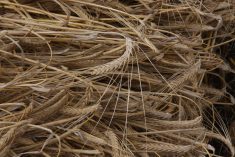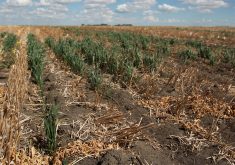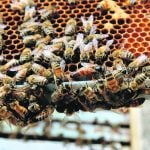It’s hard not to think of the Canada Revenue Agency as Scrooge, particularly when it took $330 billion out of taxpayers’ pockets last year. But when the CRA tells a 65-year-old farmer that she is not really a farmer and reassesses her accordingly, it makes the agency look downright mean-spirited.
The pensioner had grown up on farms and also farmed with her husband until he died in 1975. She sold a large landholding in 1987 but purchased 157 acres of farmland in 1992. Although she rented out some pasture for cattle grazing, she participated in the maintenance of the land and the herd.
Read Also

U.S. loses out on sales of soybean to China
U.S. soybean exporters risk missing out on billions of dollars worth of sales to China this year as trade talks drag on and buyers in the top oilseed importer lock in cargoes from Brazil.
Similarly, she had a 50-50 crop-share in a hayfield and participated in decisions regarding the timing and frequency of cutting. She also cut hay, hauled bales and cut brush from the field.
Despite the evidence that she took on greater responsibility for the farm operation than a normal landlord would, CRA took the position that the pasture rental and crop sharing were income from property and denied her certain deductions against her farm income.
In an effort to supplement her income during a decline in the cattle and hay markets, the taxpayer began restoring antique carriages and also offered instruction on carriage driving. CRA said the lack of business and marketing plans justified its position that this was not a commercial activity and therefore denied her claim for GST input credits related to the operation.
Fortunately for our pensioner, the Tax Court of Canada showed sympathy for her long experience in farming and judged the appeal fully in her favour.
Also accusing CRA of Scrooge-like behaviour is a group of taxpayers who are caught up in an art-flip controversy that has been going on for some time now.
Several years ago, a popular tax shelter arrangement evolved that attracted the participation of about 10,000 taxpayers.
The “buy low, donate high” concept was to buy works of art at relatively low prices, acquire an appraisal of significantly higher value and then donate the work to a registered charity. This would allow the donor to claim a tax credit at the higher appraised value.
The promoters of the scheme provided legal opinions that the shelter conformed with existing tax rules. Even some government publications seemed to confirm these opinions.
When the government shut down the scheme in 2003, it reassessed many of the participants and also tacked on penalties.
The taxpayers appealed right up to the Supreme Court, which refused to hear the case.The CRA is now making a “non-negotiable” offer of settlement that will recognize the purchase price of the art as being the value of the gift and waive any assessed penalties.
By now, the interest on the unpaid taxes, compounded daily, represents a significant portion of the taxpayers’ total tax bill.
They are appealing for leniency from the minister of revenue to waive the accrued interest charges.
What are their chances? Well, last year CRA waived more than $600 million in penalties and interest. However, the agency collected more than $3 billion from the same source.
Larry Roche is a tax analyst with farm taxation and planning specialists Farm Business Consultants Inc. He can be contacted at fbc@fbc.ca or call 800-860-7011.
















